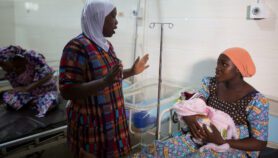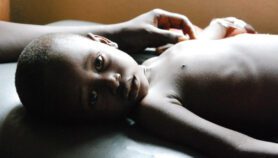By: T.V. Padma
Send to a friend
The details you provide on this page will not be used to send unsolicited email, and will not be sold to a 3rd party. See privacy policy.
[NEW DELHI] Bangladesh’s national mass media campaign to boost the use of zinc in treating diarrhoea has raised awareness, a survey finds, but children are still failing to receive treatment.
Awareness was less than ten per cent in all communities before the campaign’s launch in 2006 and peaked ten months later at between 50 and 90 per cent, says the survey conducted between September 2006 to October 2008 in four urban and rural sites in the country.
Yet twenty-three months into the campaign, which hopes to scale up zinc treatment for diarrhoea in children aged under five years, just ten per cent of rural children with diarrhoea and 20–25 per cent of those in urban areas were getting the treatment.
Diarrhoeal disease — spread through contaminated water and worsened by poor sanitation and hygiene — poses a considerable global health burden, with an estimated four billion cases and 2.5 million deaths each year.
Traditionally, it is treated by replacing lost fluids and salts in the body with oral rehydration salts (ORS).
From 1999, studies showed that supplementing ORS with zinc tablets or syrups reduces deaths — potentially saving the lives of 400,000 under-fives each year. As a result, the WHO and UNICEF added zinc to their diarrhoea treatment guidelines in 2004.
Charles Larson, a researcher in the department of pediatrics at Canada’s University of British Columbia and lead author of the study, told SciDev.Net that the public and private sectors must coordinate efforts to continue promoting zinc treatment via the mass media.
"Zinc both treats childhood diarrhoea and prevents future episodes. The latter reduces burden on health systems and addresses the fourth Millennium Development Goal [to reduce child mortality,"] he says.
Tracey Koehlmoos, head of the health and family planning systems programme at the International Centre for Diarrhoeal Disease Research, Bangladesh, a partner in the survey, says the media campaign has so far been the only national approach to scaling up zinc in Bangladesh.
More surveys are planned to identify gaps in communication.
The findings are published in 3 November issue of PLoS Medicine.
References
PLoS Medicine doi:10.1371 (2009)













